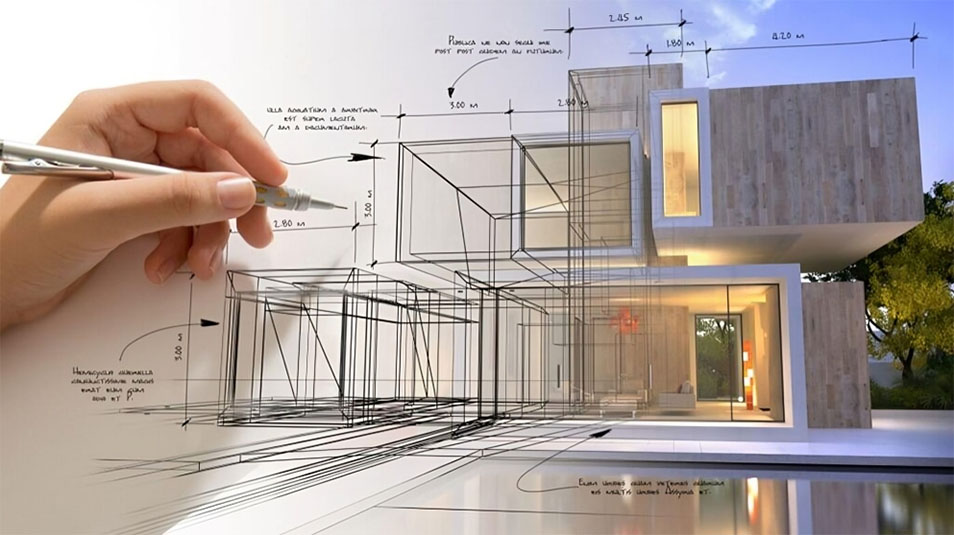Nurturing Environment Conscious Architects : TSAP
Thakur School of Architecture & Planning made a humble beginning in 2014-15 in the suburbs of Kandivali, Mumbai as a Self financed Hindi Linguistic Minority Institute under the aegis of Thakur Education Group. In the year of 2018-19, the institute Introduced B.Voc – Interior Design Degree program, affiliated with University of Mumbai. As a Commitment to contribute in the Nation building, Thakur Education Group believes in providing with high quality education.

Revolutionizing Interior Architecture with Futuristic Automation
The Design and planning of Spaces have undergone a sea of change with the latest innovation in technology, increased user awareness, development of various interfaces that bring the real-life user experience (UX), with the use of advanced technologies and simulations of Augmented Reality (AR) & Virtual Reality (VR). Technology revolution in Interior Architecture from 3D Visualization to Home automation Architectural and Interior Space Design in contemporary practices are not just spaces for single-use habitation, they are sensorial experience spaces. The ability of technology to transform any existing space from vibrant to subtle tones, depending upon the user requirement and integration of Artificial intelligence (AI) based gadgets into the equipment, fittings, and fixtures can not only accommodate the mood requirements of the user but also provide for making comfort settings and arranging the sequence of tasks that take care of the chores while being energy-efficient. The increased use of such transformatory ideas is creating a user-friendly environment that offers a higher utilization factor for the space and optimal performance of interior systems....
Architecture & Interior Design Practice today:
Decisions of technology adaptation for a project at the conceptual stage of design itself are transforming the organization, planning, and execution of projects. The involvement of consultants and industry expertise that can scientifically compute the requirements and provide appropriate solutions that are tailor-made to suit specific site conditions and contexts are now standard practice. Project coordination during execution incorporates provisions that are to be integrated with the building in a system-driven design. With the trend of innovation, each project can address the uniqueness of contextuality based upon the character of space, function, and stakeholder expectations, generating greater personalization, improved sustainability, and offering an immersive experience to its users. Architects and Designers today must closely work with Technology and Industry to provide solutions that are market-ready and are in tune with the times.
The evolution and integration of Smart Technologies:
The onset of the use of smart technologies for automation segments arrived in Interior spaces with the need to serve the purpose of advanced security systems at the doorsteps with Video phones and then home automation based upon vigilance through IP-based cameras. With the recent developments in the segment of the Internet of Things (IoT), the technology has displayed ways to enhance living by seamlessly integrating devices and systems. A smart design can involve all the features that are offered by technology or be carefully selected for the level of integration that is required to be adopted in the design: An automation system empowers to integrate different equipment, fittings, and fixtures to set up controls of lighting, sound, security, entertainment systems, and the overall energy efficiency understanding the requirements of the user. Any size of home can adopt these features for hardly any technology costs for gaining the benefits of living in smart spaces. Retrofitting requires the addition of a few chips and gadgets that can fit in any decor and be seamlessly integrated with the existing system without any major changes. At a slightly advanced level, IoT allows for remotely controlling and monitoring devices. This can be achieved by simple use of smartphones, tablets connected with applications and web interface. The benefits of such adaptation are far-reaching and are extremely beneficial for the working class that has to take care of elders or children when away. The potential to enhance the overall level of safety can be very well explored by the use of smart gadgets integrated within the existing equipment by adding smart cameras, door locks, and motion sensors, providing real-time alerts and video feeds. Lastly, an automated home provides the perfect high-end luxury of living in comfort with the ability to define, set, and control gadgets and services at will. The technological advances are here to stay, and the Architects or Designers that hone smart skills shall have the cutting edge growth and demand in the industry. The benefits of an automated smart home are now being well understood, adapted, and well perceived by more and more conscious buyers today, more than ever before. Institute of interior designing in Mumbai plays a pivotal role in preparing the next generation of architects and designers to navigate this evolving landscape. Institute of interior designing in Mumbai plays a pivotal role in preparing the next generation of architects and designers to navigate this evolving landscape. Institutions like Thakur School of Architecture & Planning offer comprehensive programs that blend traditional design principles with cutting-edge technologies, ensuring that graduates are equipped to meet the demands of the industry. As the field continues to embrace automation and smart technologies, these institutes serve as hubs of innovation, driving forward the future of interior architecture.
